


After three rounds, no fewer than 6 out of the 10 top seeds have been knocked out in the open section of the FIDE World Cup in Sochi. Although it should be noted that Levon Aronian left the competition due to health issues and was not eliminated by a lower-rated opponent, it is still surprising to see so many of the top stars out of contention this early in the tournament.
Moreover, had Maxime Vachier-Lagrave not won his Armageddon game against David Paravyan on Tuesday, we would only have 3 players from the top 10 still going. MVL’s colleagues Anish Giri (6th seed) and Shakhriyar Mamedyarov (4th seed) did not make it through in the rapid and blitz tiebreakers of round 3.
Giri was knocked out by Uzbek prodigy Nodirbek Abdusattorov, who will turn 17 later this year and has already been a grandmaster for almost 4 years. The youngster outplayed his famed opponent from technical positions twice in a row. First, with the black pieces.
38.Re3, attacking the dangerous black passer was, in fact, a mistake, due to 38...h5 — a move Abdusattorov had clearly foreseen! Now, in case of 39.Rxd3, Black has 39...h4+ 40.Kxg4 Ne5+, grabbing the rook. Giri was on the back foot and could not recover, as he resigned five moves later.
The Dutchman could not win on demand with black in the second tiebreaker. In an equal endgame, he kept looking for winning chances and ended up losing again. The critical position was analysed by GM Karsten Müller (find his annotations to this and two other endings at the end of this article).
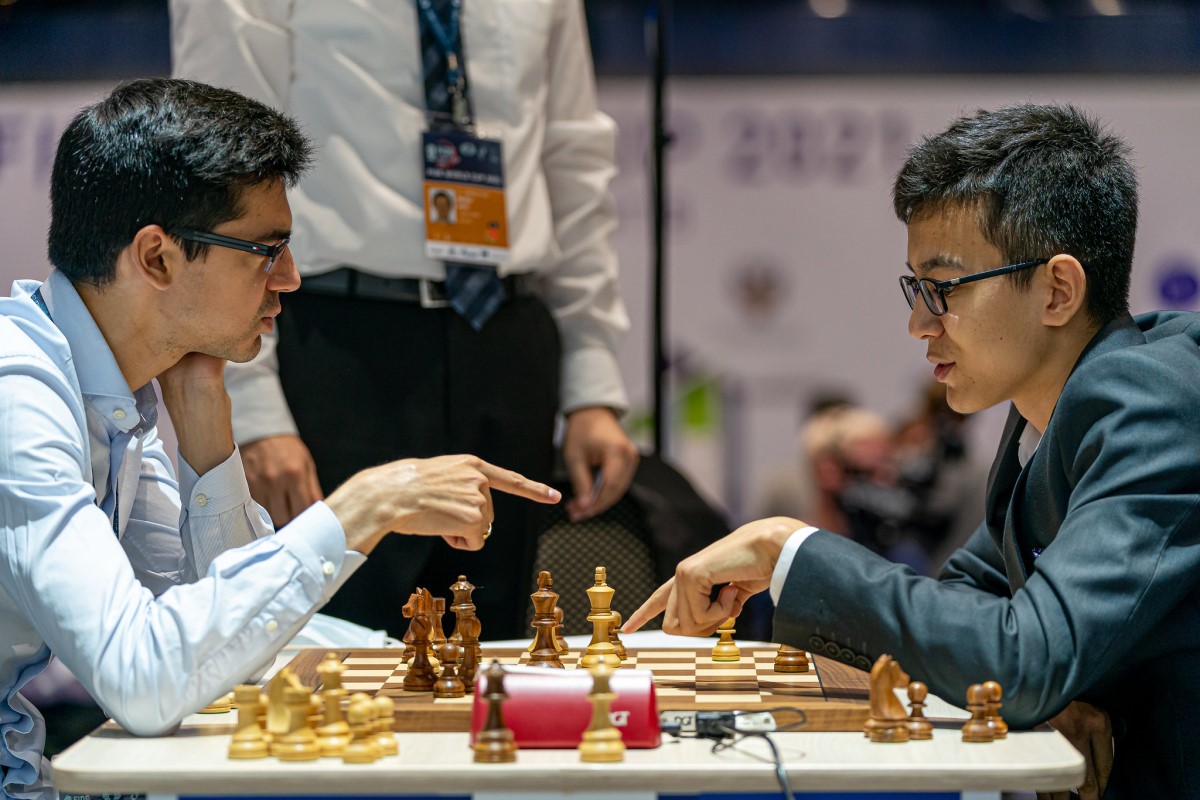
Anish Giri and Nodirbek Abdusattorov | Photo: Eric Rosen
Much like Giri, Mamedyarov also kicked off the day losing with the white pieces. His opponent, 21-year-old Armenian GM Haik Martirosyan, had already beaten him with black in their first classical encounter. Shakh could not hold a bishop vs knight endgame a pawn down.
The bishop cannot defend both the h5-pawn and the d3-square. After 87.Be8 Nd3+ 88.Ke2 Ne5 there is no more hope for White. The Azerbaijani resigned shortly after.
Mamedyarov did get winning chances in the rematch, but Martirosyan held his own in the highly tactical struggle until getting the needed half point. The Armenian will face Croatian GM Ante Brkic in round 4 — Brkic (rated 2592) knocked out Yuriy Kryvoruchko (2699) and Saleh Salem (2682) in the previous two rounds.
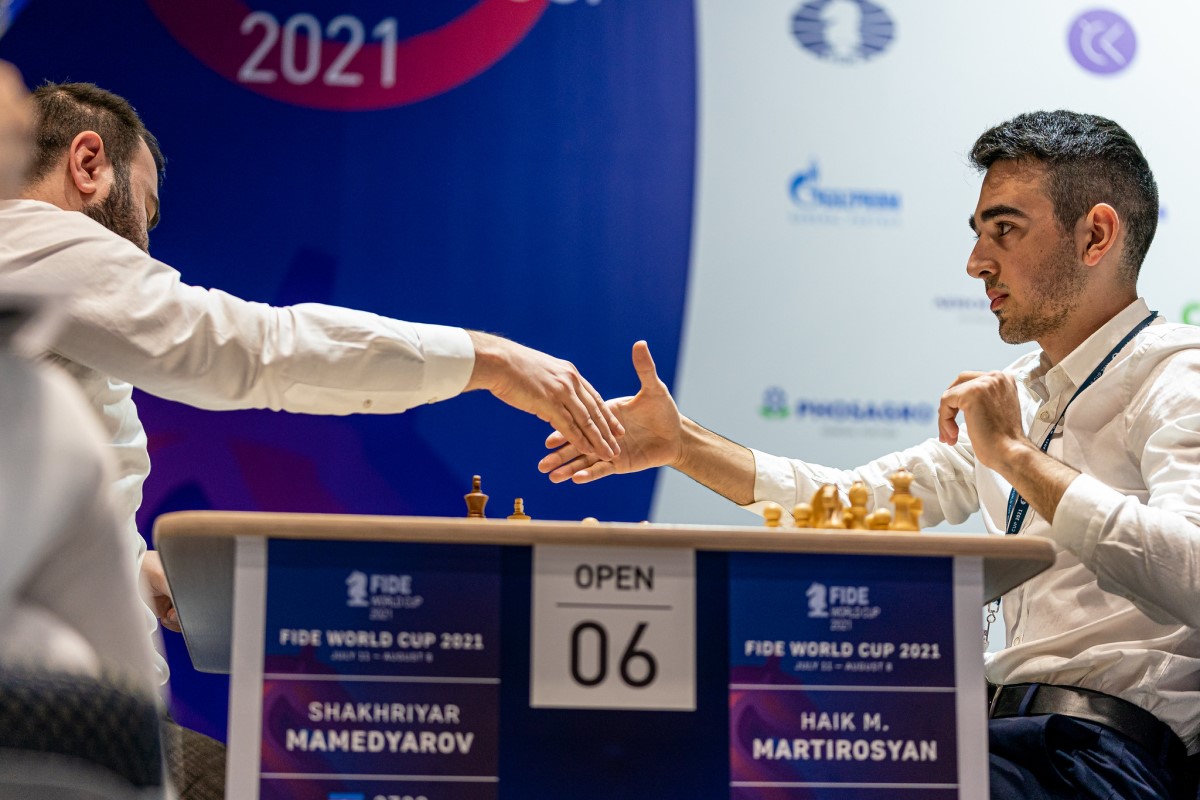
On to round 4 — Haik Martirosyan | Photo: Eric Rosen
About four hours after Giri and Shakh had been eliminated, Vidit knocked out his compatriot Adhiban in one of the most entertaining matches of round 3. Shortly after, MVL would get his ticket to the next round by beating David Paravyan with white in the third match of the event (including both sections) that was decided in Armageddon.
All the results of Tuesday’s playoffs:
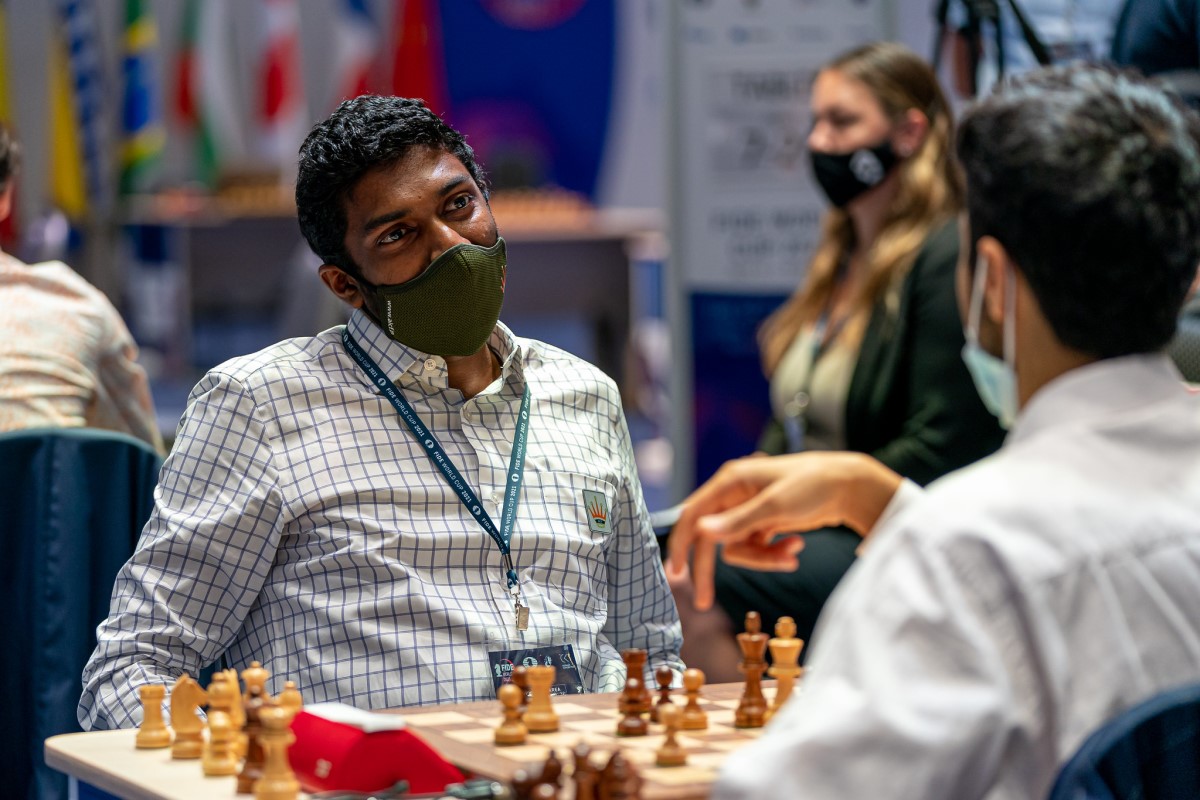
Adhiban fought hard but could not beat his higher-rated compatriot | Photo: Eric Rosen
Replay all the games from the World Cup at Live.ChessBase.com
In the women’s section, only 4 matches were decided in Tuesday’s tiebreakers. The longest confrontation saw two former women’s world champions trading blows in three sets of rapid and blitz tiebreakers. Facing her compatriot Anna Ushenina, Ukrainian GM Mariya Muzychuk survived a worse position in the second 5-minute game to secure a spot in the fourth round.
In a must-win game, Ushenina came from missing some chances in the middlegame. Unfortunately for her, by this point it was almost impossible to avoid a perpetual check with the queens still on the board and both kings vulnerable — Muzychuk found 47...Rxf1+ 48.Nxf1 Ne2+ 49.Kg2 Nf4+ and the king cannot escape the checks.
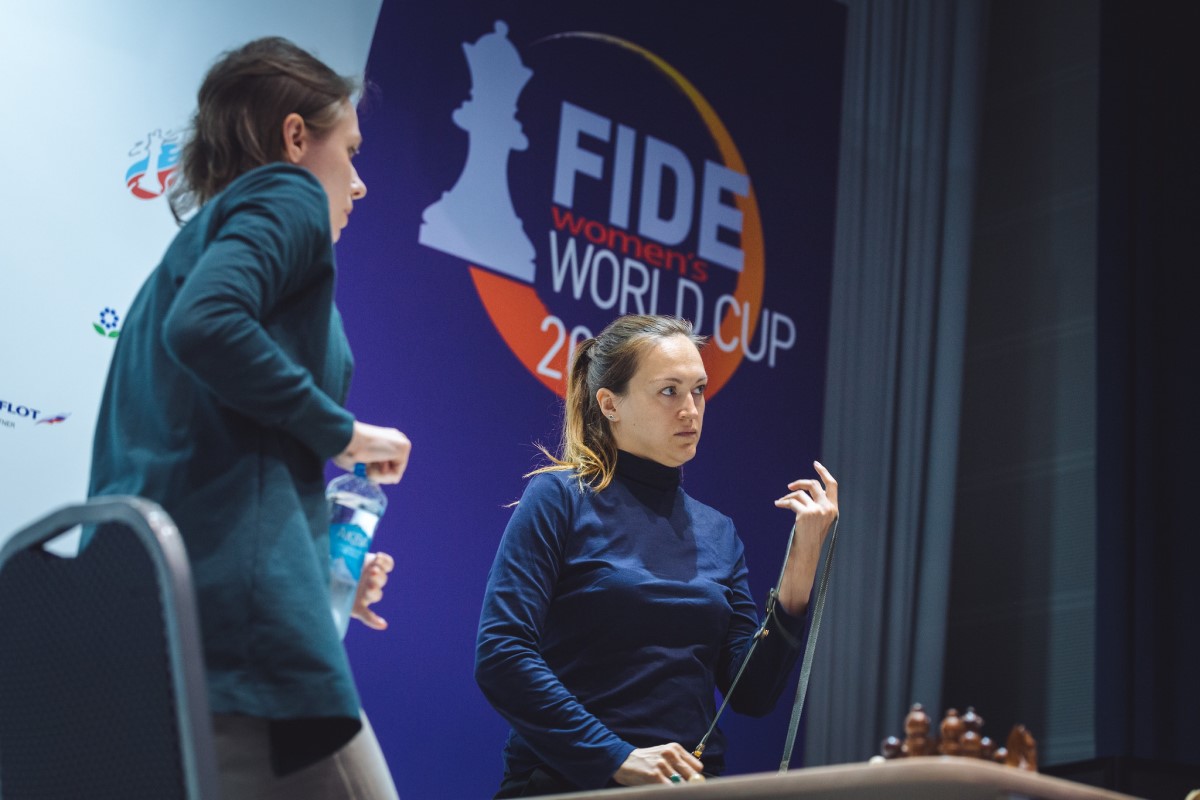
A tough all-Ukrainian match — Mariya Muzychuk and Anna Ushenina | Photo: Eric Rosen
The other highlight from Tuesday’s action in the women’s section was 17-year-old Kazakhstani IM Bibissara Assaubayeva knocking out 15th seed Bela Khotenashvili. Assaubayeva continues to impress, as she left 15th seed Zhansaya Abdumalik out of contention in the previous round.
In the remaining two matches, Nana Dzagnidze knocked out Carissa Yip and Polina Shuvalova knocked out her compatriot Leya Garifullina.
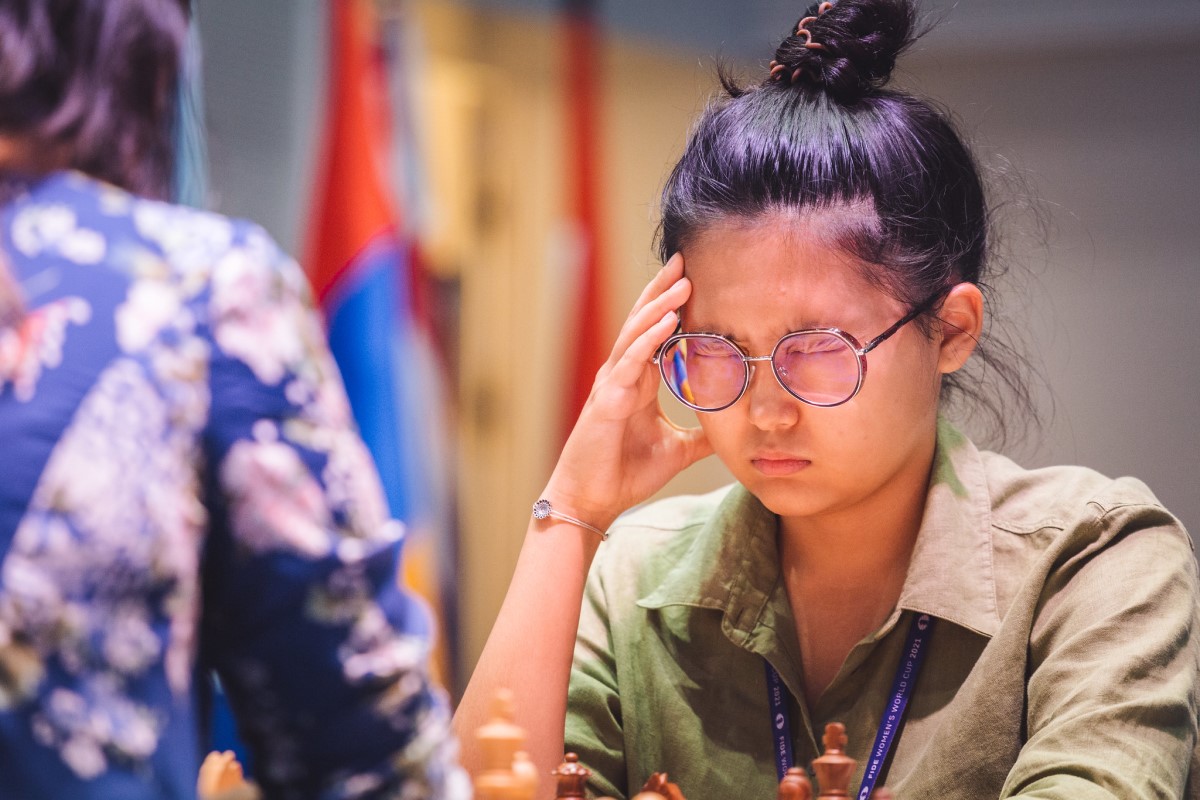
Bibissara Assaubayeva | Photo: Anastasiia Korolkova
Replay all the games from the Women’s World Cup at Live.ChessBase.com
Endgame specialist Karsten Müller uses a position from the first game between Muzychuk and Ushenina to illustrate how Dr. Tarrasch’s famous guideline, “rooks belong behind passed pawns”, is often useful, but can also lead to many mistakes.
Ushenina played 63...Ra2 and went on to lose the game eleven moves later. GM Müller demonstrates why the intermediate check, or zwischenschach, 63...Rc2+ was called for in this particular position.
Our in-house specialist also looks at instructive endgames in Abdusattorov vs Giri and Grandelius vs Xiong.
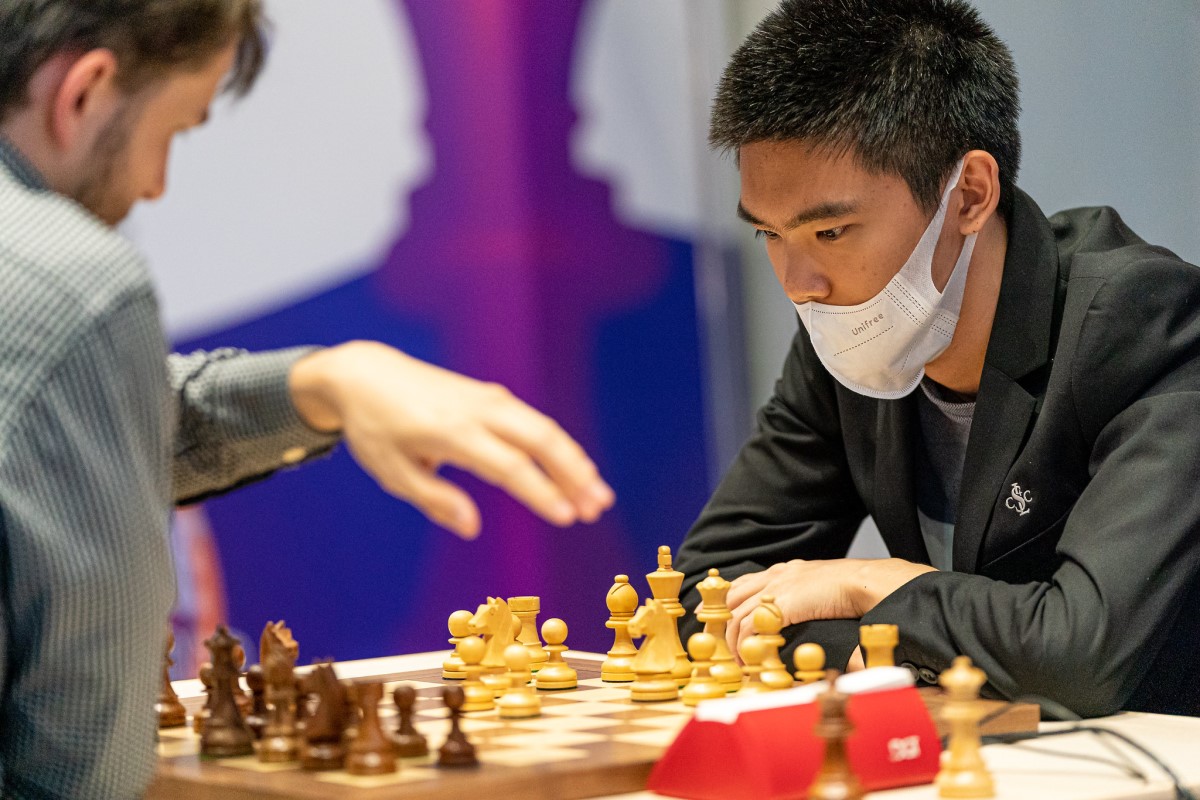
Jeffery Xiong will face Vidit in the next round | Photo: Eric Rosen